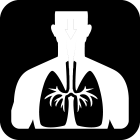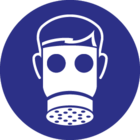 Likely to cause
Likely to cause
 Can cause
Can cause
 May cause
May cause
METHYLISOTHIAZOLINONE (MIT) (primary CASRN is 2682-20-4)
CAS: 125794-71-0
How can this chemical affect my health?
Acute (Short Term) Effects

Toxic to Humans & Animals – Toxicity or fatality on contact, ingestion or inhalation to humans and other mammals.

Skin Irritation – Irritation or serious damage to the skin.

Eye Irritation – Irritation or serious damage to the eyes.
Chronic (Long Term) Effects

Skin Sensitization – Allergic skin reactions.

Endocrine Disruption – Interference with the endocrine system, which plays a crucial role in metabolism, development, growth, reproduction and behavior.

Other Health Effects – Can cause serious damage on contact or ingestion.
Inherent Hazards

Restricted List – This chemical is on a list from an authoritative body recommending that its use be avoided.
How does this chemical impact the environment?

Acute Harm to Aquatic Ecosystems – Biological harm or possible death to fish or other aquatic organisms following a single exposure.

Chronic Harm to Aquatic Ecosystems – Irreversible harm to fish or other aquatic organisms following long term exposure.
What safer alternatives are available for this chemical?
Information on safer alternatives is currently fairly limited, and not easily accessible or linked to information on chemicals in the workplace. Where we have information on safer alternatives, ChemHAT will display links to existing case studies of safer alternatives for the chemical.
How am I likely to be exposed to this chemical?

Ingestion

Skin contact

Eye contact

Inhalation
How can I protect myself from exposure to this chemical in the workplace?

Handle with gloves

Protective clothing

Safety eyeware

Respirator